QuestionHi
Thanks for taking the time to read my question.
Our kelpie dog is 19 months old and has a beautiful nature. She is a terrific family pet. She had her first litter on May 1. She had no problems with the birth and had 7 very healthy puppies. She has looked after them very well until about 5 days or so ago we noticed her teats seemed quite full and she does not want to spend any time with them. She does not even sleep with them at night. I have brought her and 3 pups inside to our bedroom and made her lie down while I pat her and she feeds the three pups then swap the pups over and let the other four feed. They are obviously very hungry when I make her feed them and when she does go near them they even try to feed while standing up! They are three and half weeks old and I thought they would wean about 5 weeks. Is she trying to wean them now and if so what should I feed them and how often? Is there a danger of her getting mastitis if she just keeps refusing to feed them? We are not breeders and plan to get her spayed after the pups are at their new homes.
Thanks.
AnswerHi Simone,
Many puppy deaths occur simply because the mother's milk is bad. Since the mother will not necessarily act sick if her milk is bad, it's most of the time impossible to tell if her milk is ok or not. There is a wonderful product called Nitrazine Paper (can be found at many drug stores), that allows you to test moms milk. How it works, is it tests the PH level in the milk. Squeeze a drop of milk onto this paper. There is a color-coded chart included. If the paper turns green, the milk is safe. If it turns blue, this means that the milk is bad. Do not let the puppies nurse if the paper turns blue. Your mother will need to be taken to the vet to be put on antibiotics. Amoxicillin can be given safely to a nursing mother. After your mother has completed her antibiotics, re-test her milk, and if it tests good and your vet says it's ok, it's safe to put the puppies back on mom.
You have two options - tube feeding or bottle feeding.
Puppies who are small and weak usually won't take a bottle if they aren't strong enough to hold onto a nipple, therefore, tube feeding is the recommended option in that case. If you have strong puppies who are either orphaned, or the mother simply does not have enough milk or has bad milk, you may choose to bottle feed them, as trying to get a tube down a strong wiggly puppy isn't very easy!
You can buy cans of puppy milk replacer at larger pet stores, or from your vet, or you can make your own puppy formula:
10 oz. of canned evaporated milk or goat's milk (not pasteurized cow's milk! This will cause diarreah - puppies cannot drink normal cow's milk!) Goats milk is by far the best to use. Wall Mart sells it.
3 oz. sterilized water (baby water or boiled water) this is not needed if using goat's milk
1 raw egg yolk
1 cup of whole yogurt (avoid skim or fat free if at all possible)
1/2 Tsp Karo Syrup or Corn Syrup (NOT HONEY!!!)
Place ingredients in a blender and blend or use a wire whisk. Be careful to not over blend and create a milk shake full of bubbles and then tube bubbles into the puppy.
Keep cool and discard leftovers after 7 days.
Warm formula to body temperature (dogs are around 101 degrees). Discard any un-used formula. This is a thick mixture -enlarge the hole in the the bottle's nipple for easy access for the pup.
How to tube feed:
Lay the puppy on it's side, and with the tube, measure from the tip of the nose to slightly past the last rib. Mark the tube for each puppy, and be sure to re-measure them daily. Fill the syringe (with the tube attached) with formula, making sure there are no air bubbles. We use goat milk, heated but not too hot. Always test the temperature of the formula! Holding the puppy on his/her stomach, gently push the tube down one side of the throat (not the middle), until the mark on your tube touches the corner of the puppy's mouth. Slowly push down on the syringe to feed the puppy. The formula will go directly into their stomach. Then, slowly remove the tube. If you do not feel comfortable tube feeding, then don't. You can harm the puppy if this is done wrong!!
How to bottle feed:
For newborn puppies, if you use a human baby bottle, make sure you use a slow-flow nipple. Always feed the puppy while he/she is lying on their stomach. As with tube feeding, be sure to test the temperature of the formula before feeding!
Here are some general rules for bottle feeding puppies:
* Burp your pups after feeding.
* A pup may have little bubbles by his mouth but there should not be milk running out of his mouth.
* When the bottle is held upside down the milk should drip out - NOT FLOW OUT in a stream - pups that get milk in their lungs will get pneumonia and more than likely die.
* Calorie intake needs to be adjusted according to growth of puppies. A general rule of thumb (unless someone has a better idea) is 1 CC per OZ. of body weight every 3 hours.
* You must have an accurate scale to weigh pups if you are going to get the best success. Use a kitchen food scale.
Whether you are supplement feeding, or if the puppies are nursing off of mom, newborn puppies need to be fed every 2-4 hours, depending on their age and weight.
These sites have additional info on bottle feeding:
http://www.miniature-pinscher-world.com/bottle-feeding-a-puppy.html
http://www.talktothevet.com/ARTICLES/DOGS/Pfeedorphanpups.HTM
http://www.peteducation.com/article.cfm?cls=2&cat=1651&articleid=863
Best of luck,
Patti

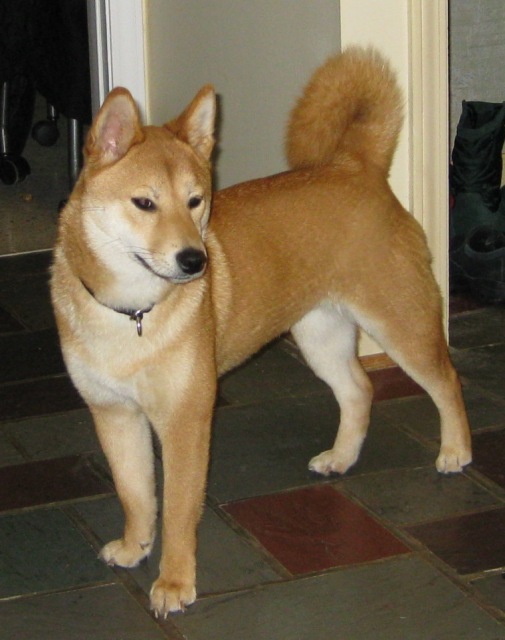 Rescued Shiba with ISSUES
Question
Shredder
Kristin,
I consider myself an experie
Rescued Shiba with ISSUES
Question
Shredder
Kristin,
I consider myself an experie
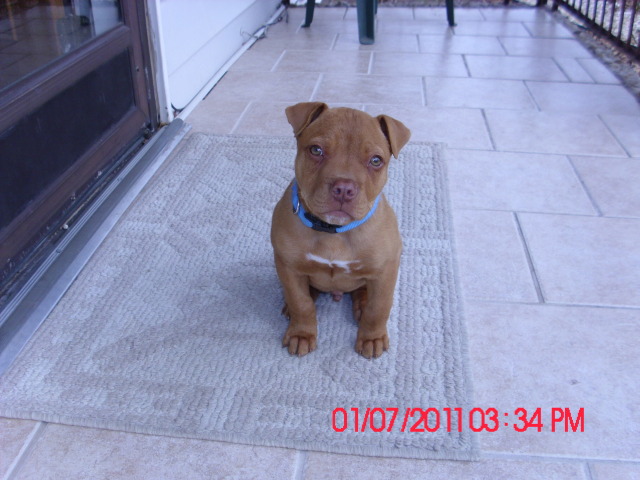 puppy medical concerns
Question
Rusty
my 11 week old red nose pit bull at time
puppy medical concerns
Question
Rusty
my 11 week old red nose pit bull at time
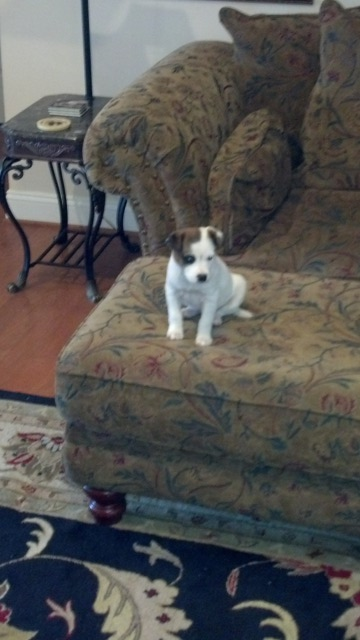 new puppy
Question
bella
I adopted a puppy from the humane
new puppy
Question
bella
I adopted a puppy from the humane
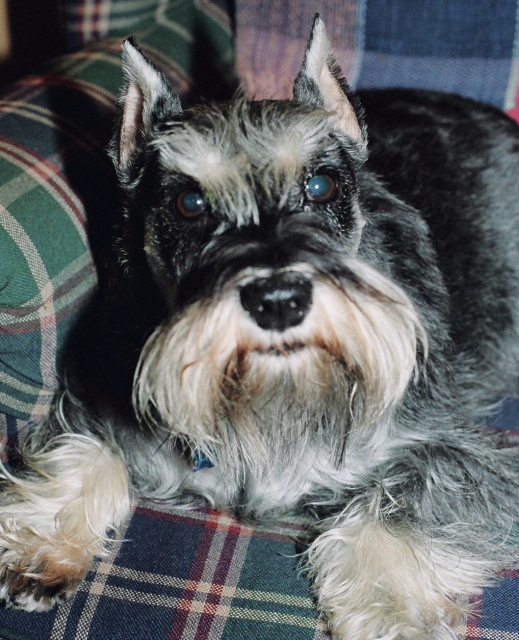 Miniature Schnauzer Flaky Skin
Question
Cicero
My 7-year-old miniature schnauzer Cicer
Miniature Schnauzer Flaky Skin
Question
Cicero
My 7-year-old miniature schnauzer Cicer
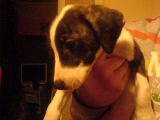 7 week old lurcher pup
Question
this is Lady
hi there me and my partner purch
7 week old lurcher pup
Question
this is Lady
hi there me and my partner purch